Andee
Chameleon Enthusiast
Now before anyone goes any further, I took these pictures of medicating my jackson Hope with her weekly dose of liquid calcium, sadly it did make it last a bit longer, I won't lie about he getting a little bit more stressed during it. But my mom took the pics while I was doing it, and I took them for many reasons, one of them specifically was because I was helping a member who was having more problem than I have ever experienced. So I wanted to make sure they were doing it correctly before I told them to go back to vet in case she had something neurological or physically wrong with swallowing.
Now what you need to know about chameleons is they usually only aspirate oral syringe feedings/medicating if you just place food in the front part of their mouth. Since their trachea opening is somewhere under their tongue. So what I do is place the tip of the syringe in the back of their throat, usually going until the tapered edge is no longer visible. For most species of larger chameleons this is fine, same with jacksons I have dealt with. With smaller species you will likely need a flexible tipped syringe that has been cut a bit (though I don't know if you can get it in the correct size for them which I only use 1cc syringes) and filed down so it is no longer sharp. Or as I prefer since I learned of these from @jpowell86 crop needles. Amazing attachments <3 can't wait to get my first set even if they are just a back up in case a get a really small rescue.
Anyway, these picture may be a bit disturbing for some people because of the stress colors and reaction Hope shows, but I assure you she rarely looks this stressed as it usually takes about 30 seconds to medicate her, and she wasn't bothered for around 20 minutes afterward, and then when I did bother her it was only to gain her favor with a couple silkworms. Which she happily snapped off my fingertips. In my opinion it is HUGELY important for everyone who owns a chameleon to correctly know how to medicate them. This is the only reason I am sharing these pictures. There are too many keepers out there that get into situations like this that don't know how and end up causing RI in their chameleons because of doing it wrong.





Just hoping to help,
Me and Hope
Now what you need to know about chameleons is they usually only aspirate oral syringe feedings/medicating if you just place food in the front part of their mouth. Since their trachea opening is somewhere under their tongue. So what I do is place the tip of the syringe in the back of their throat, usually going until the tapered edge is no longer visible. For most species of larger chameleons this is fine, same with jacksons I have dealt with. With smaller species you will likely need a flexible tipped syringe that has been cut a bit (though I don't know if you can get it in the correct size for them which I only use 1cc syringes) and filed down so it is no longer sharp. Or as I prefer since I learned of these from @jpowell86 crop needles. Amazing attachments <3 can't wait to get my first set even if they are just a back up in case a get a really small rescue.
Anyway, these picture may be a bit disturbing for some people because of the stress colors and reaction Hope shows, but I assure you she rarely looks this stressed as it usually takes about 30 seconds to medicate her, and she wasn't bothered for around 20 minutes afterward, and then when I did bother her it was only to gain her favor with a couple silkworms. Which she happily snapped off my fingertips. In my opinion it is HUGELY important for everyone who owns a chameleon to correctly know how to medicate them. This is the only reason I am sharing these pictures. There are too many keepers out there that get into situations like this that don't know how and end up causing RI in their chameleons because of doing it wrong.
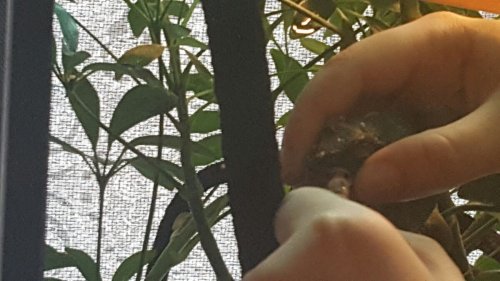
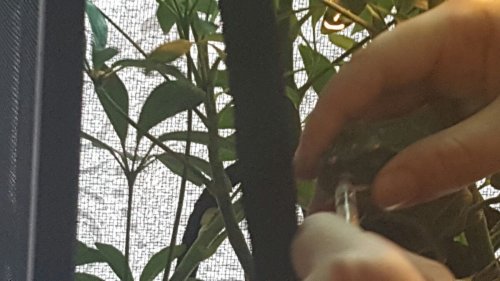
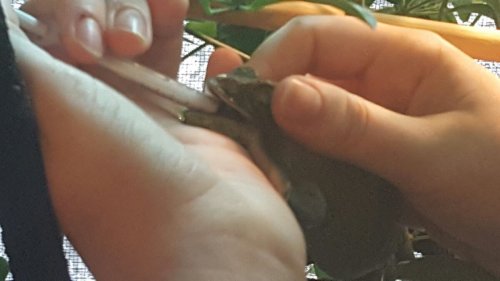
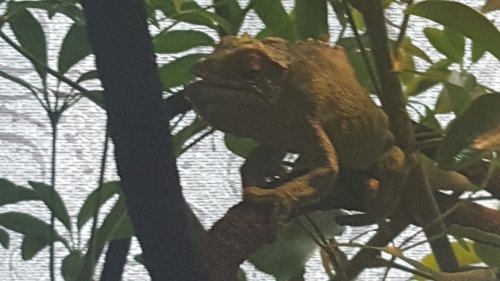
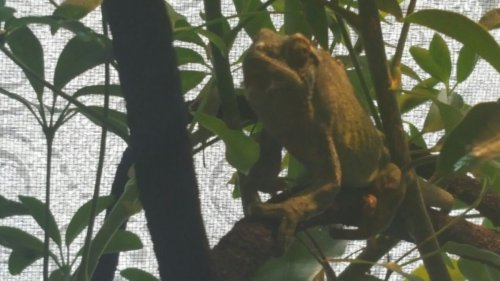
Just hoping to help,
Me and Hope
